| Umělec magazine 2002/1 >> Art and the “Big Corporation” (An interview with art critic Frank Perrin) | List of all editions. | ||||||||||||
|
|||||||||||||
Art and the “Big Corporation” (An interview with art critic Frank Perrin)Umělec magazine 2002/101.01.2002 Anaid Demir | paris | en cs |
|||||||||||||
|
"An uneasy economic and artistic situation reigned in 1992 when art critics Frank Perrin and Armelle Leturcq decided to launch their revue Bloc Notes, which became one of the pivotal young magazines devoted to contemporary French art. In 1998, the same duo took over the reins of the magazine Crash, which folds all the art disciplines, from music to art to fashion, into one uniform package. At a time of globalization and against the background of a new economy and evermore diluted artistic efforts, Frank Perrin gives us his own views on the state of French art over the last ten years.
What was the situation like on the art market and in French art in general in 1992, when your revue Bloc Notes first hit the stands? The crisis in art struck suddenly as a result of the Gulf War in 1991. At the time, the market collapsed, especially in sales rooms. A certain degree of attrition began to be felt in classic galleries and new exhibition rooms began to open. The funny thing is that things have not changed much since then, despite the fact that a decade has gone by and we have all grown older. In 1992 there were three revues — Bloc Notes, Documents, Purple — and three young galleries — Jennifer Flay, Anne de Villepoix and Fabienne Leclerc. This also had a bearing on the rise of a wave of numerous young artists. This was not a mere transitory moment but a true cultural milestone, when elements, which the system needed, were focused in one particular unit. Today, Jennifer Flay or Anne de Villepoix are no longer a part of the young gallery scene, although attention continues to be focused on them as if they were still new. The same applies for artists who began to make their mark at that time. Today, they are no longer “young artists,” but are still seen as young, which has lasted for ten years. This goes to show that there was a change of orientation in art in1992, not only in France, but on a European and international scale. There was a change of values, methods… and over the course of two to three years, certain things crystallized. Are we talking about a new art scene? A new scene certainly exists, but the rules have changed. The 1990-1993 scene was distinguished by a reorganization of distribution. These artists all became more or less internationalized. Today, other laws than those that govern the scene in specific regions control internationalization. When I worked ten years ago, it was possible to say that there were 60 potential French artists, 60 German, 150 American and so on. All this created a very dynamic and tempestuous artistic environment. Back then we were confronted by a new reality, which was just beginning to make its mark at the time. Today I can no longer say there are 120 American artists, fifty French artists, and so on, with artistic potential. There has been a complete globalization of the situation. Art forms can no longer be based on regional roots. That has completely disappeared. Although there are certain names circulating, they are like grains of pollen circling the earth. The less we understand an artist’s work, the greater the nimbus of rarity that surrounds their work, and the greater the enthusiasm it incites. It is a bit like the stratosphere, in which there are fifty recognized names and we don’t care if we know whether they are French, Italian or German at all. This describes the art scene in the last four, or even five years, but that does not mean that this will last forever. In actual fact, this is the result of globalization and economic consolidation. From now on we are looking at big corporations with big artistic groups, where before these had been small artistic families. Now big collectors, whether these are in Europe or America, uphold the same values. Previously there had been a need to support French artists, collect French art, and so on. During the course of five or six years however, we have come to realize that this would be practically useless, simply because the situation has changed. A similar process to that at Microsoft is currently taking place in art, which means that this process is taking place in all fields. In reality, art and the desire for art is keeping pace with its time. Art fully follows trends in economic development. Take Damien Hirst at an international level. It works the same way as Microsoft does in the economy. When you began to publish Crash, which was in 1998, you spoke of a “transformation.” What did you mean by that? At that time, the atmosphere in French art was very much focused in on itself. However, we felt that the boundaries of art would disappear so that art could spread and become something very porous. Today, we no longer know where the boundaries between music, fashion, visual art or even cosmetics, lie. Which is all the better, because creation limited to an identification of one’s own field only ever gave rise to unions and art corporations. But art is not a corporation; it is more like internationalized allegoric creation. In this context talking about the state of French art is, in my eyes, a completely anecdotal matter; it simply does not exist. There is no Italian art, just as there is no French art; from now on there is only world art. And in order to understand this, we try to analyze the situation, but I am not sure that this situation has been of long duration. Things are still to move forward. In 1992 art was constrained, it was a certain type of creation within a small space, everyone had withdrawn into themselves. We tried to open art up, to make it accessible to other meetings, other mixes. However this resulted in the sort of dilution that now — ten years later — means we are confronted by a “big corporation.” Suddenly local creation had no future; in fact it had no existence. It would be interesting to create a new form of art criticism on an international scale. Art interests me again now, because, just as in the 90s, there is a real need for a critical point of view, a need to create new markers. In this respect, after ten years, we find ourselves back at the beginning and the situation is more or less repeating itself … There is less talk of sales rooms, but famous names are circulating. Some works are exceedingly over priced, hiding speculative practices, in which four people push the price higher so that they can subsequently protect the market. Often we are witness to speculation on rather weak works of art. In relation to the globalization of art, I feel it would be interesting to step out of the given framework and to consider the fact that art may now have a certain role to play. Perhaps this is to create model procedures, which we could almost call “post capitalist.” Art was never so much a product of its time as it is today. Art has entered a period that is both exciting and empty, for after all it is money that determines its definition. And because we have reached this double apotheosis of poverty, it is interesting to observe the degree to which art has in the past, and from the start, been an act beyond the boundaries of capitalism or creation following behind capitalism, in a society which currently has such enormous difficulty with self-definition in relation to a whole series of things. Such an understanding of matters however would mean that artists such as [Inez] van Lamsweerde, [Andreas] Gursky and others, are mere decorations for banks, values, which are merely a haven for, or an outer symbol of wealth. However this does not necessarily always have to be an expression of artistic conclusiveness. Although one does not preclude the other, it is not always true that what costs a lot of money is necessarily stupid. Nevertheless, the definition of art is decided by the economy. This means that we live in a time which can arrogantly claim to have come out of a crisis, but which remains quite poor. And it is here that I feel if we return to the work of Philipp Meste, Joep van Lieshout — whether this is the city civil war for Meste, collective utopia with Joep van Lieshout’s design or even the city, collective life and others — we are dealing with icons of rather heroic form, for something that we are trying to formulate today and call “post capitalism.” This contains something new that we have to accomplish together with artists, something that appeared less conclusive to us in Crash at a certain time. It is funny, but art cannot be done full time. One cannot remain in this euphoria all the time. It is a highly complex geography, with good, not so good and grim periods. And now, for many different reasons, we once again find ourselves at a historical milestone. I feel that we are entering a period that is very interesting for many reasons. However these reasons do not include the art market, in fact, these reasons do not even have to be artistic. "
01.01.2002
Recommended articles
|
|||||||||||||
|
04.02.2020 10:17
Letošní 50. ročník Art Basel přilákal celkem 93 000 návštěvníků a sběratelů z 80 zemí světa. 290 prémiových galerií představilo umělecká díla od počátku 20. století až po současnost. Hlavní sektor přehlídky, tradičně v prvním patře výstavního prostoru, představil 232 předních galerií z celého světa nabízející umění nejvyšší kvality. Veletrh ukázal vzestupný trend prodeje prostřednictvím galerií jak soukromým sbírkám, tak i institucím. Kromě hlavního veletrhu stály za návštěvu i ty přidružené: Volta, Liste a Photo Basel, k tomu doprovodné programy a výstavy v místních institucích, které kvalitou daleko přesahují hranice města tj. Kunsthalle Basel, Kunstmuseum, Tinguely muzeum nebo Fondation Beyeler.
|







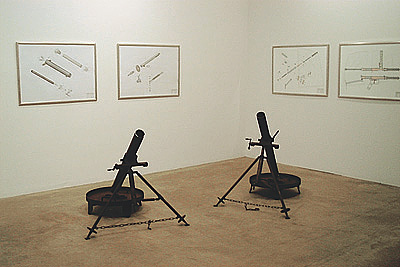
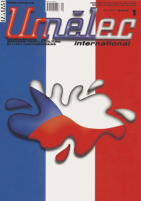














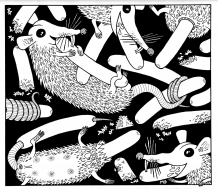






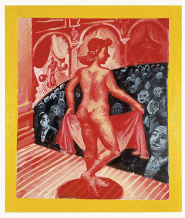
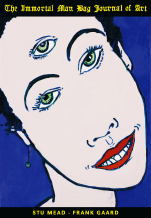


 New book by I.M.Jirous in English at our online bookshop.
New book by I.M.Jirous in English at our online bookshop.
Comments
There are currently no comments.Add new comment